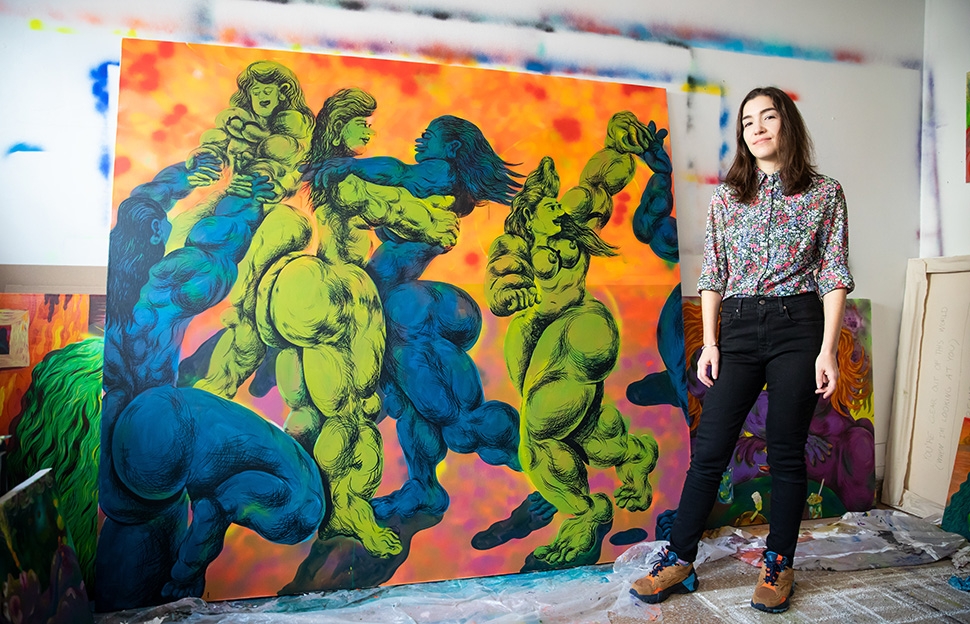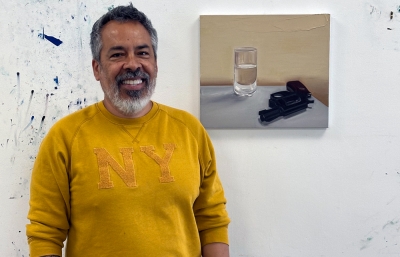What else do the paintings help you communicate that is difficult to talk about?
Just about everything! I’m a pretty quiet and sometimes shy person. My new year’s resolution is actually to say what’s on my mind more often. I pour a lot of my emotion and internal life into my paintings. My paintings are just as much me as I am me, if that makes any sense, even though my paintings and my outward personality appear to be opposites.
Do you get into a hypnotic zone in the studio? The paintings seem so energetic, like they would be painted furiously to music, and you’re the conductor.
Sometimes! That’s the best when that happens. I have moments of energetic painting and other moments of just sitting back and looking, trying to figure out what the next move is. I don’t agonize over paintings most of the time. I like to just keep moving, keep making another painting. Whatever I learn in one, I’ll bring to the next. I’m not much for endless revisions. I like imperfection in my paintings.
What’s the last song you listened to on a loop?
You seem really good at painting souls. That’s the best I can describe it. Do you think about revealing souls through art? The good and bad ones?
Wow, thank you. To me, that’s the highest compliment. I guess I never thought about it as souls before, but as I mentioned, I try to have each character in my paintings be revealed fully, in their truest form. Maybe that’s part of it.
And even when I’m painting a figure with the aim to criticize something, it’s never from a place of negativity. I don’t think I ever paint a bad soul. There’s always joy, even within darker paintings.

















